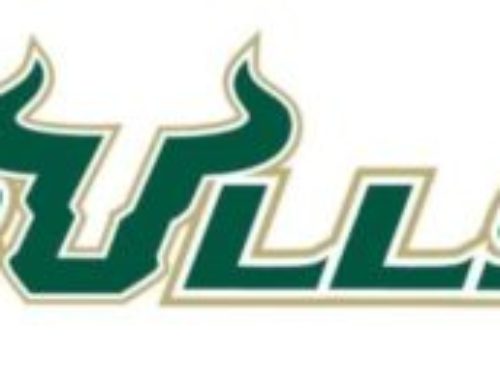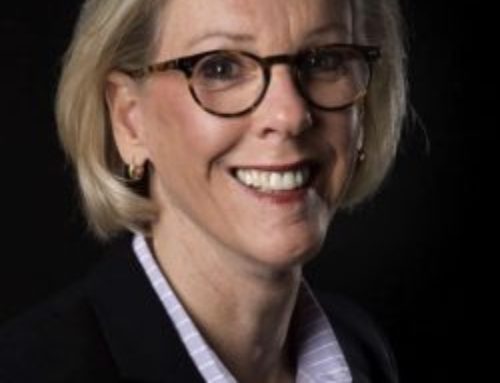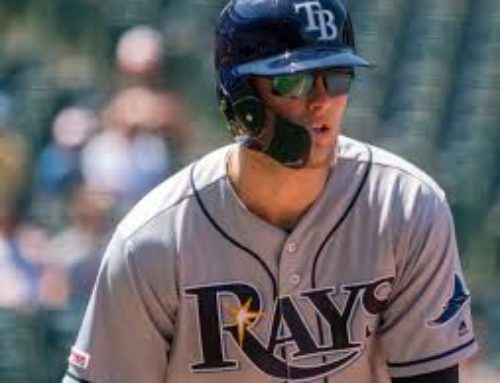Pete Rozelle’s vision transformed the NFL into America’s No. 1 game. Today, Paul Tagliabue is charged with managing its overwhelming growth and sometimes thorny modern issues.
By JOEY JOHNSTON
The Tampa Tribune
(c) Tampa Bay Times. Originally published Jan. 22, 2001.
NEW YORK – He delivered the National Football League into America’s living room. He made the owners very wealthy. Players were promoted as mythological figures.
Sunday afternoons were sacred. The Super Bowl, his invention, was a national holiday.
Pete Rozelle was the most powerful man in sports.
By 1986, he hated his job.
Rozelle’s final years as NFL commissioner were about survival. His face was puffy and his eyes were bloodshot. Sometimes, he spent entire days giving depositions.
Seemingly, the NFL was crumbling from within. After two consuming trials, the Raiders moved from Oakland to Los Angeles. Then the Colts left Baltimore, like a thief in the night. “This is my candy store and I can move it wherever I want to,” Colts owner Robert Irsay said. Upon hearing that, Rozelle told friends he became physically ill.
Confidence shook when NFL players staged a 57-day strike in 1982. Another work stoppage was imminent, so owners were girding to break the union. But in ’86, Rozelle’s chief concern was a $1.7-billion antitrust suit brought by the springtime United States Football League.
Some owners were frightened. When they huddled to consider a worst-case scenario, they demanded a recommendation from the NFL’s lead attorney. The response: Settle.
The big, bad NFL was on its knees. The tension was palpable. Some heads bowed.
Long silence.
Another man spoke, almost angrily, into the microphone.
I’m in total disagreement with what I’ve just heard.
Heads turned. The NFL’s chief outside counsel – invisible to football fans – had the floor. He laid out the strategy. Many of the claims would be dismissed before the trial and the USFL couldn’t prove serious financial losses, he predicted. Settle? No, try this case.
Rozelle couldn’t have been more persuasive. Soon, there was consensus. All because of that man in the shadows.
A man named Paul Tagliabue.
THE HOME OFFICE is contained within four floors in a bank building, on the corner of Park Avenue and 48th Street. This part of midtown Manhattan is filled with bank buildings – and professional sports leagues. Baseball is across the street. Basketball is nearby. Hockey is around the corner.
But the NFL operates in a different neighborhood.
The home office is sealed from view. Once cleared through security, you ride an escalator, hop the elevator and emerge into a lobby that sparkles with Disney-like sheen. Without an appointment, you won’t get that far.
While cooling your heels, you can check the encased displays. There’s a Miami Herald front page from 1973, saluting the Perfect Dolphins. Kurt Warner’s Ram jersey. A beat-up leather helmet from the 1922 Green Bay Packers. Replicas of Super Bowl rings.
Behind the glass doors, opened only by an NFL access card, there’s a beehive of activity.
There’s Jerry Seeman, making his weekly training tape for officials. There’s Gene Washington, studying the video, watching for helmet-to-helmet contact, dishing out the player fines. There’s NFL Properties, the merchandising arm, with concepts and brainstorming artists all around.
There’s a young, professional, urgent feel. Rozelle might not recognize the place. There’s NFL International. There’s the New Media division.
You could see someone from the networks. Perhaps some owners are in town. Eventually, you’ll spot the gangly man in shirt sleeves. Maybe he’s carrying around a yellow legal pad. Maybe he’s going down the hall to copy and staple a newsy article that caught his eye.
That’s Mr. Tagliabue.
He doesn’t like being called Mr. Commissioner.
Many associates call him Paul.
Tagliabue, an antitrust attorney and longtime member of Rozelle’s kitchen cabinet, was elected commissioner in 1989 after a month-long standoff with Jim Finks, a respected football man. Tagliabue was a known quantity, having represented the NFL in high-profile cases for Covington and Burling, a Washington law firm.
Still, when Rozelle retired following a 29-year career, owners wondered if the league be the same. Would continuity erode?
It’s a lot different. Maybe it’s better. Don’t worry about the continuity. Sunday, Tagliabue will preside over his 12th Super Bowl.
Now each team receives $75 million in annual television revenue. There’s labor tranquility. By this spring, the eight-year Collective Bargaining Agreement should be extended beyond 2003.
There’s record attendance, even when admission prices have increased, personal-seat licenses are in vogue, and fans have home-viewing opportunities like satellite TV and the Internet.
“The league is No. 1,” former quarterback Boomer Esiason said. “None of those other sports are even on their radar screen.”
A COMMANDING presence at 6-foot-5, Tagliabue was a former basketball captain at Georgetown. He’s an intellectual, a strategist. He just turned 60 and doesn’t look it. In recent years, he hinted at retirement when his contract expires in 2005. Now he’s not sure.
The job is lucrative (he was paid more than $8 million last year) and demanding. Inside his 17th-floor office, at the end of a typically diverse day, Tagliabue removed his glasses, rubbed his eyes and smiled. He’d like to have an occasional weekend off. For now, though, there are barely enough hours in the week.
“I’ve never thought of myself as a workaholic,” he said. “I feel good. I do. The sport is very healthy. Even with the issues we sometimes deal with, there’s still nothing like game day.”
Sure, there are modern-day problems. For one, the league doesn’t have a franchise in Los Angeles, the nation’s No. 2 TV market. Four teams have switched cities since 1995. As franchise values skyrocket and new owners enter the league, additional vigilance is needed to protect the league’s shared-revenue concept, the cornerstone of its success.
Tagliabue was hired largely because his legal skills were perceived requirements for these litigious times. Actually, the NFL has gone to court less frequently under Tagliabue, who’s bigger on cooperation than litigation.
“Most of the contentious legal issues had been litigated,” Tagliabue said. “There was not a lot more to be gained through further litigation.
“I’ve found the only problem you can’t solve is the one that surprises you. If you anticipate your important priorities, you can deal with almost anything.”
NFL priorities have altered dramatically. Rozelle actually had to sell the game. In 1961, the NFL was a distant third in popularity, behind baseball and college football. At that year’s Cotton Bowl, Tom Landry and Tex Schramm were seen in hotel lobbies, handing out business cards and chatting up writers.
Trying to create publicity for the Dallas Cowboys.
Imagine that.
Rozelle, a former public-relations man, believed television was the route to mass interest. He made the right friends at the networks and along Madison Avenue. Monday Night Football was his baby. He convinced a roomful of barons to pool their resources, to take less than they deserved, and help the common good.
Poof! A roomful of capitalists had adopted socialism. Rozelle made them think it was their idea.
He convinced Congress to allow the league’s concept of single-entity television contracts. It was a landmark move that secured financial solvency. Rozelle’s legislative lobbying also assured the NFL-AFL merger and the Super Bowl.
“Pete Rozelle was amazing,” Tagliabue said. “He looked out for the fans because he was a fan himself. He knew the game was entertainment and television was the best way to drive that entertainment. The things he accomplished were magical.”
By 1989, though, Rozelle had enough. Even though most football fans were clueless – Tag-lee-a-who? – the new commissioner had always been Rozelle’s man behind the curtain. On important matters, Rozelle would say, “We better check with Paul.”.
They worked well together. But they were thoroughly different people.
ROZELLE WAS A great schmoozer. That’s how he did business. He loved the smoke- filled rooms. He was comfortable with a small group of writers or former players. He listened to their stories for hours, while drinking a rusty nail and smoking a Carlton.
Tagliabue has no such vices. He often walks to work. He, too, likes a good story. But he’s probably more content to immerse himself in an issue, alone at the office on a Saturday morning.
For relaxation, he and his wife escape to their vacation home at Squirrel Island, off the coast of Maine. They have a large deck that overlooks the Atlantic Ocean. Away from television and cell phones, they read books for days and days.
Rozelle was charismatic and street smart. He had a innate way of summarizing a five-hour meeting into two sentences. “The most relevant two sentences, by the way,” Baltimore Ravens owner Art Modell said. Rozelle’s particular media appeal was confusing to outsiders – he was sometimes evasive, yet constantly portrayed as candid – but he was perfect for a chummier era of sports.
Tagliabue has been characterized as stiff, lawyerly, blunt. Yet in a one-on-one setting, he is wry and conversational. “A much better wit than he is given credit for,” said NFL senior vice president Joe Browne, who began in the league’s mailroom in 1965.
Much more versatility than he is given credit for, too.
Tagliabue, who has morphed from attorney to businessman, oversees more than 450 employees. At the same time, he has 32 bosses. Like Rozelle, Tagliabue has the near-impossible task of managing the collective interests of the franchises, a network of independent businesses.
Sometimes, Tagliabue is criticized for ruling by committee. What’s more, he appoints the committees. Some owners feel like they’re out of the loop.
“With today’s issues and the league’s size, small committees are the only way you can do business now,” Bucs general manager Rich McKay said. “You can’t please everyone. The NFL is a huge, huge undertaking.”
Under Bert Bell, the commissioner until his death in 1959, NFL headquarters were in suburban Philadelphia. Many days, Bell ate lunch at a next-door pharmacy.
Rozelle lifted the NFL from its mom-and-pop slumber to New York because the corporate decision-makers were here. Still, the league had matured slowly when the Super Bowl era began. The NFL’s modest offices overlooked ice skaters at Rockefeller Center. Full-time staffers: 12.
The league has grown exponentially, almost crazily, under Tagliabue. Now it’s a $3.5-billion giant with wide-reaching tentacles. But now it’s more streamlined, with all business units reporting to the commissioner.
Tagliabue’s biggest accomplishment has been labor relations. Rozelle generally washed his hands of labor concerns. He appointed a committee of owners to a Management Council, which was not even housed in the NFL’s building. The council did the dirty work. It had the hammer. In later years, with two player strikes, there was war-like posturing and no solutions.
Tagliabue reassembled the Management Council – hiring Harold Henderson, a former executive with Amtrak, to serve as senior vice president – and brought it into the NFL office. Henderson was sent from team to team, establishing a dialogue with players.
“The main thing I got was, “We have an average four-year career and after that, the league throws us out, doesn’t care about us, does nothing for us,’ ” Henderson said. “Paul’s a pretty quick study. After a few seconds, he looked at me and said, “You know, we need to start a program.’ “
That was the beginning of the NFL’s Player Programs, which has established a player liaison with each team, internship opportunities, continuing education assistance and counseling for players and their families.
Tagliabue has a respectful relationship with Gene Upshaw, NFLPA executive director. He even brought the maverick, Dallas Cowboys owner Jerry Jones, back into the fold. “I have not always agreed with Paul, but he has never held a grudge toward me,” Jones said. “He wants what’s best for the league. That’s in keeping with the tradition of Pete Rozelle.”
Rozelle’s last major public appearance was 1991, when he flipped the coin at Super Bowl XXV in Tampa. He wasn’t a good spectator. He felt out of place. “He wanted to get out of there,” Browne said. “He didn’t want to feel as if he was looking over Paul’s shoulder.”
Rozelle was 70 when he died of cancer in 1996. One longtime NFL staffer said he felt more grief at Rozelle’s funeral than at his own father’s burial. Rozelle inspired loyalty. He blazed a trail. He put his league on the map.
An era had ended. Now another one is well under way.
“Pete was pretty perfect for his time,” Tagliabue said. “We’ll let someone else pass judgment on me and my time.”
The NFL is more popular than ever.
So far, so good.





